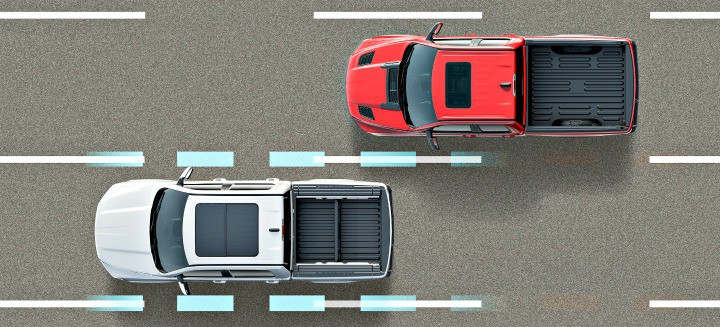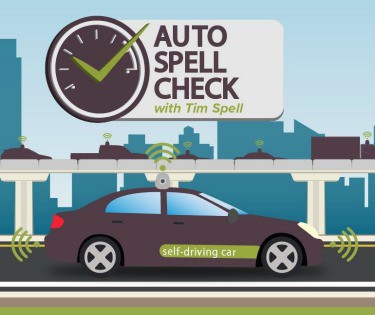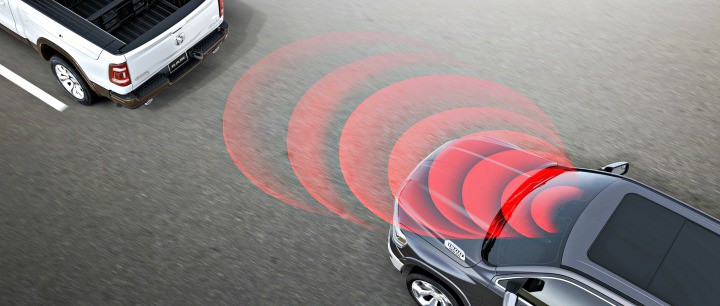New Pickup Trucks Models Start to Adopt Specific Semiautonomous Features

Attention to semiautonomous vehicles is focused on passenger cars and SUVs, but progress also has been made in the development of near-driverless pickups.
Ram Trucks recently unveiled its new-generation 2019 1500-series pickup, which showcases smart technologies that allow safety systems to automatically take over a significant portion of driving duties. The main ingredients providing semiautonomous benefits are lane-assist and adaptive cruise-control technologies.
LaneSense Lane Departure Warning-Plus is Ram’s lane-assist system. It will be available on 2019 Laramie, Longhorn and Limited models. The system uses digital cameras, positioned at the back of the rearview mirror, to monitor lane stripes ahead.
 “As you begin to deviate from centerline, into the lane, you will then get a torque reversal on the steering wheel,” says Mike Raymond, Ram 1500 chief engineer. “So, our electric power-steering-gear system software basically picks up the signal. It will give a torque correction back through the wheel and give your arms a tug back toward center alignment of the lane.”
“As you begin to deviate from centerline, into the lane, you will then get a torque reversal on the steering wheel,” says Mike Raymond, Ram 1500 chief engineer. “So, our electric power-steering-gear system software basically picks up the signal. It will give a torque correction back through the wheel and give your arms a tug back toward center alignment of the lane.”
The Ram system allows the driver to adjust the amount of torque applied — light, medium or high — as a reminder you’re drifting from the lane. Activating the turn signal to make a lane change overrides the torque response.
The system recognizes when a driver’s hands are removed from the steering wheel and gives a warning.
“It’s not fully automated driving,” Raymond warns. If hands are off the steering wheel “it’s not going to correct. You’re in that unsafe zone.”
LaneSense isn’t intended for use when lane markers are obscured, such as in several inches of snow, he says, so the driver should run with it off when road conditions are poor. There’s an on-off switch high on the instrument panel.
A small amber-colored “chicklet” indicates the state of activation, and pressing it turns on the system.
CHECK OUT: What Driverless Features Are Available Today?
The other major part of the Ram’s semiautonomous system is its Adaptive Cruise Control with Stop, Go and Hold. It allows the pickup to maintain a driver-adjustable distance from the vehicle ahead and reacts to stop-and-go situations.
“The stop feature initiates when you’re locked into traffic and locked into the individual in front of you at 60 mph, and the traffic comes to a halt,” Raymond says. “It will recognize it’s coming to a halt and stop the vehicle. As the traffic starts to pull away it will start accelerating and pull away with the traffic.”
Along with driver-assist benefits, he says reduction of fatigue and stress are advantages of Adaptive Cruise Control and LaneSense.
In conventional driving mode, the Ram’s Forward Collision Warning-Plus feature recognizes when the pickup is approaching another vehicle or large obstacle too fast. It warns the driver if an impact is imminent and, if necessary, deploys the brakes.
“By no means are we taking the driver out of the loop,” says Raymond, regarding the Ram’s semiautonomous features. “They aren’t that sophisticated yet. Hopefully, they help avoid accidents and insurance claims, and so forth.”

Ram isn’t alone in providing semiautonomous features to truck customers. The 2018 Ford F-Series and new-generation 2019 GMC Sierra models offer comparable driver-assist technologies.
Front Pedestrian Braking, which will be available on new-generation 2019 GMC Sierra SLT and Denali pickups, is an active safety technology designed to prevent collisions with pedestrians and bicyclists. GMC reports: “If the system detects that a pedestrian is directly ahead, and a collision is imminent, and the driver has not already applied the brakes, the system alerts the driver and, if necessary, automatically applies the brakes to help reduce the collision’s severity or avoid the collision.” In a situation like this knowing how much the cost of different car insurances will be beforehand can help save you time and money in the future when you are purchasing a vehicle with upgraded tech features.
RELATED: Race Cars Without Drivers? How the Sport Will Adapt
Drivers of tall pickups must be aware of blind spots and difficult-to-see low-slung vehicles. The problem becomes more complex when a trailer is in tow.
Ford offers a blind-spot alert system for most of its F-150 and F-250 pickups that goes a step further to assist drivers pulling a trailer. Its Blind Spot Information with Cross-Traffic Alert and Trailer Coverage reacts with a signal in the outside mirror when a vehicle is detected in the blind spot. It provides extended blind-spot coverage for both the pickup and trailer.
The safety package also includes cross-traffic alert, which detects a vehicle passing behind while the driver slowly backs out of a driveway or parking spot.
With the sophisticated array of driver-assist technologies offered on pickups, the question arises: How far away are manufacturers from developing fully driverless trucks?
“Everybody is exploring it,” Raymond says, “and it’s just a matter of time that everybody is going to be there to some degree or another.”

